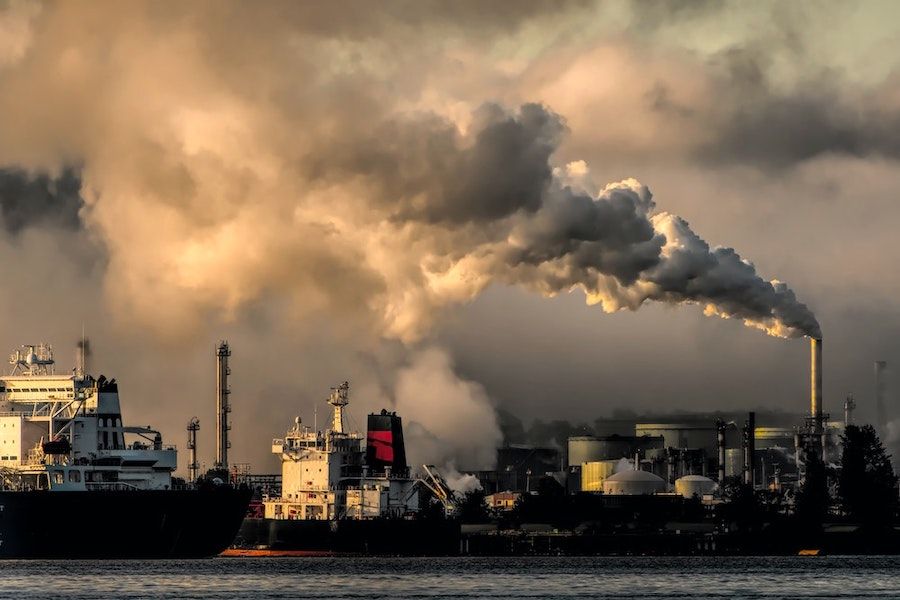Understanding Thermal Pollution
Thermal pollution is a significant environmental issue that affects water bodies worldwide. It refers to the degradation of water quality due to changes in ambient water temperature caused by human activities. This phenomenon can have detrimental effects on aquatic ecosystems, impacting fish populations, plant life, and overall water quality. This article will explore the causes, effects, and mitigation strategies associated with thermal pollution, as well as its broader implications for the environment and society.
What is Thermal Pollution?
Thermal pollution occurs when water bodies, such as rivers, lakes, and oceans, experience a sudden change in temperature, typically due to human activities. This change can result from the discharge of heated water from industrial processes, power plants, and urban runoff. Unlike chemical pollution, which involves the introduction of harmful substances into the water, thermal pollution primarily affects the physical properties of water, particularly its temperature.
Causes of Thermal Pollution
Several factors contribute to thermal pollution, many of which are linked to industrial and urban activities. Here are the primary causes:
| Cause | Description |
|---|---|
| Industrial Cooling | Power plants and factories often use water from nearby sources for cooling machinery. Heated water is then discharged back into the environment, raising the temperature of the receiving water body. |
| Urban Runoff | Rainwater runoff from paved surfaces, such as roads and parking lots, can heat up as it flows into nearby water bodies, especially during hot weather. |
| Reservoir Management | The release of cold water from the bottom of reservoirs into warmer rivers can create thermal shock, impacting aquatic life. |
| Deforestation | The removal of trees near water bodies reduces shade, allowing sunlight to heat the water directly. |
| Soil Erosion | Erosion can expose water bodies to more sunlight, increasing their temperature. |
| Natural Causes | Natural events like volcanic activity, geothermal springs, and hot springs can also contribute to thermal pollution. |
Effects of Thermal Pollution
The impacts of thermal pollution can be severe and wide-ranging. Key effects include:
- Decreased Oxygen Levels: Warmer water holds less dissolved oxygen, which is crucial for the survival of aquatic organisms. Fish and other aquatic life may suffocate as oxygen levels drop.
- Altered Ecosystems: Different species have specific temperature ranges in which they thrive. Sudden temperature changes can lead to the death of sensitive species, disrupt food chains, and promote the growth of invasive species that can tolerate higher temperatures.
- Thermal Shock: Rapid changes in temperature can cause thermal shock, which can be fatal to fish and other aquatic organisms. This shock can occur when heated water is discharged into a cooler environment or vice versa.
- Reduced Biodiversity: As certain species die off due to temperature changes, biodiversity in aquatic ecosystems can decline. This reduction can lead to imbalances in the ecosystem and affect the overall health of the water body.
- Impact on Recreation: Warmer water temperatures can affect recreational activities such as fishing, swimming, and boating. Changes in fish populations may lead to decreased fishing opportunities, impacting local economies.
Case Studies of Thermal Pollution
Thermal pollution has been documented in various locations around the world, showcasing its widespread impact. Here are a few notable examples:
| Location | Description |
|---|---|
| Mississippi River, USA | Power plants along the river have been forced to adapt to warmer water temperatures, affecting their cooling efficiency and increasing thermal pollution. |
| Potrero Generating Station, San Francisco | This power plant discharged water approximately 10°C warmer than the ambient bay temperature, significantly impacting local aquatic life before its closure in 2011. |
| Australia’s Murray-Darling Basin | Cold-water pollution from dams has disrupted local ecosystems, leading to the decline of species sensitive to temperature changes. |
Mitigation Strategies for Thermal Pollution
Addressing thermal pollution requires a combination of regulatory measures, technological innovations, and community engagement. Here are some effective strategies:
- Cooling Towers: Many industrial facilities can implement cooling towers to dissipate heat before discharging water back into natural bodies. These towers allow for heat exchange with the atmosphere, reducing the temperature of the water released.
- Cooling Ponds: Similar to cooling towers, cooling ponds are man-made bodies of water designed to cool heated water through evaporation and convection before it is returned to the environment.
- Regulatory Standards: Governments can establish and enforce regulations that limit the temperature of discharged water. These regulations can help protect aquatic ecosystems by ensuring that water is returned to the environment at a temperature close to its natural state.
- Reservoir Management: Proper management of reservoirs can help mitigate thermal pollution. For example, releasing warmer surface water instead of cold bottom water can prevent thermal shock in downstream rivers.
- Public Awareness Campaigns: Educating the public about the impacts of thermal pollution and promoting sustainable practices can help reduce its occurrence. Community involvement in monitoring local water bodies can also lead to better management practices.
The Role of Technology in Monitoring Thermal Pollution
Advancements in technology play a crucial role in monitoring and managing thermal pollution. Here are some key technologies used:
| Technology | Description |
|---|---|
| Remote Sensing | Satellite and aerial imagery can be used to monitor water temperatures across large areas, helping to identify hotspots of thermal pollution. |
| Automated Monitoring Stations | These stations can continuously measure water temperature and other parameters, providing real-time data for regulatory agencies and researchers. |
| Modeling Software | Advanced modeling tools can predict the impacts of thermal pollution on aquatic ecosystems, allowing for better planning and management. |
Conclusion
Thermal pollution is a pressing environmental issue that poses significant threats to aquatic ecosystems and water quality. Understanding its causes, effects, and mitigation strategies is essential for protecting our water resources and ensuring the sustainability of aquatic life. By implementing effective management practices and leveraging technology, we can work towards reducing thermal pollution and its impacts on the environment.
Frequently Asked Questions (FAQ)
1. What is thermal pollution?
Thermal pollution is the degradation of water quality due to changes in ambient water temperature caused by human activities, such as industrial discharges and urban runoff.
2. What are the primary causes of thermal pollution?
The primary causes include industrial cooling processes, urban runoff, reservoir management, deforestation, and natural events like geothermal activity.
3. How does thermal pollution affect aquatic life?
Thermal pollution can decrease oxygen levels, cause thermal shock, alter ecosystems, and reduce biodiversity, leading to the decline of sensitive species.
4. What are some strategies to mitigate thermal pollution?
Mitigation strategies include using cooling towers and ponds, establishing regulatory standards, managing reservoirs effectively, and raising public awareness.
5. How can technology help monitor thermal pollution?
Technologies such as remote sensing, automated monitoring stations, and modeling software can provide valuable data for managing and mitigating thermal pollution.For more detailed information on thermal pollution, you can visit the Wikipedia page on Thermal Pollution.



